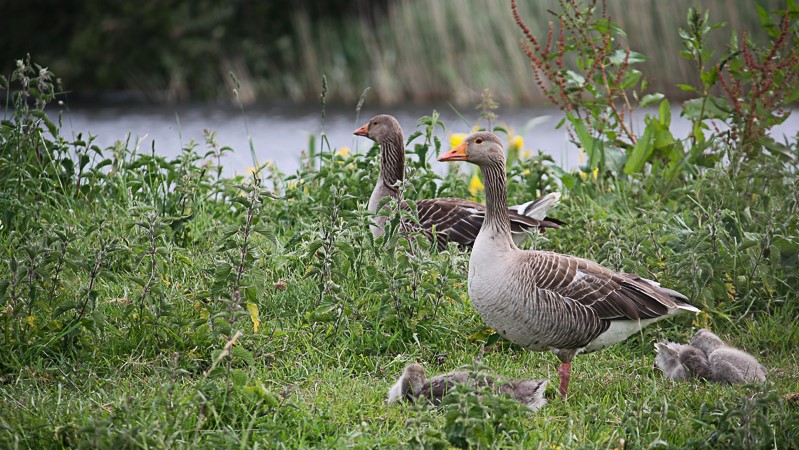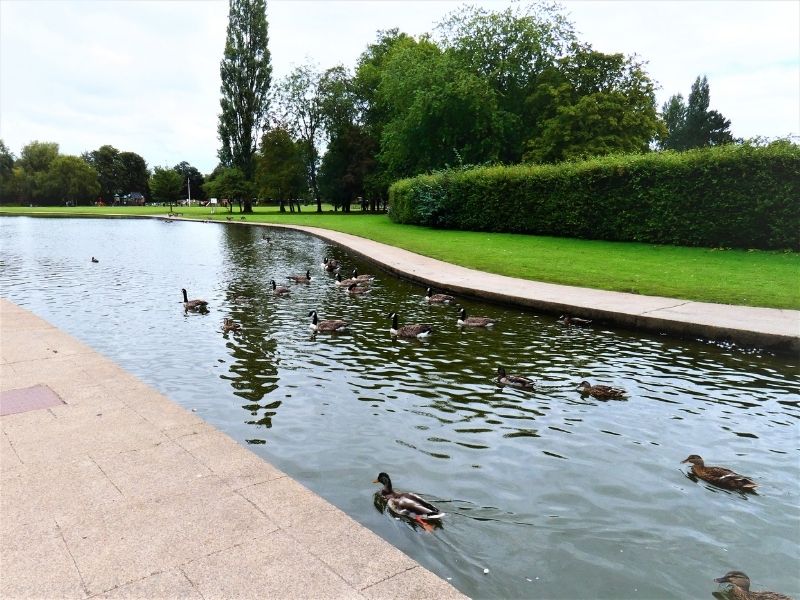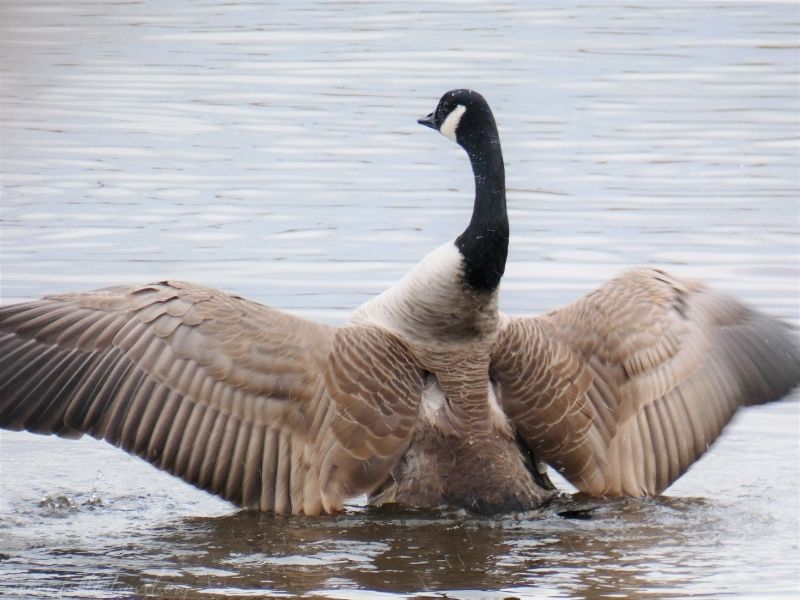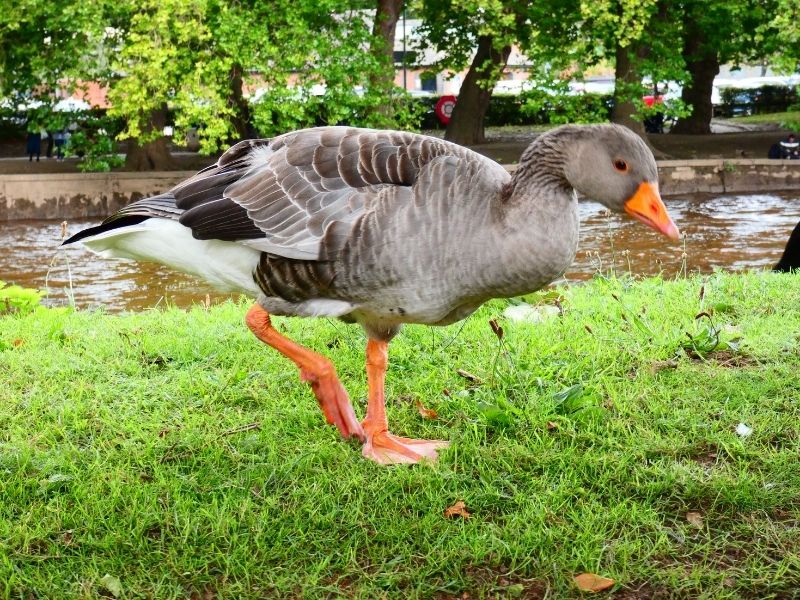When going on a trip to York, I actually planned to get to know the area and explore the surrounding forests and moors, searching for birds.
And although we reached Wykeham Forest, at one point, we ran out of navigation, and we had to turn back. Fortunately, York is also a bird-friendly place. 😊
As soon as we arrived in the city, we took a walk to Rowntree Park, located on the River Ouse. This 20acre green belt is a fantastic place to hang out. There is a caravan park with a playground, a basketball court, tennis courts, a skate park, a cafe, and many other attractions. More importantly, it is literally a 5-minute walk from the historic part of the city.
But for me, the most important place was the pond in the central part of the park.
Obviously, where water is, you can find birds!
Just at the beginning, we met ducks and geese living in the park – mainly this year’s specimens of the Canadian goose. Canadian Goose (Branta canadensis) was one of my first birds photographed in winter at RSPB Ham Wall. I knew little about them then, but I was impressed when they spread their wings (180cm)! It is one of the largest geese found on the British Isles but is considered an invasive species throughout Europe.
Barnacles are certainly one of the dominant birds in the park. When we returned from the city center after sunset, dozens of them were lying down to sleep on the city lawn.
So far, I could photograph them only from a distance, and here such a surprise, they were literally at your fingertips.
In the park, we also saw Mallards – wild with classic plumage and its domesticated hybrids, which were still nesting. However, it seemed to me quite late. Every now and then, coot came to the nest. Knowing its aggressive nature, probably she was looking for something (ducklings) for dinner?
We also witnessed romantic scenes between the pigeons that joined together in dance and cooed sweetly 😀
On the way to the city, we met a greylag (Anser anser) walking along the river bank. Some of you know that I was lucky to photograph a greylag family in Somerset, although it’s not their territory. Seeing it completely, not shy in the city center, was a total surprise. 😊
Greylag goose is not the most common geese species on the islands, but it is much more common in the east and north of the country. I need to add that British greylags are the only ones in the European population that don’t migrate. Furthermore, almost 90,000 individuals from Iceland come to the islands for the winter!
Greylag Goose is the wild ancestor of the domestic goose that was domesticated in ancient Egypt.
I also think that it is one of the most interesting species in terms of behavior. Youngs remain under the care of their parents for a long time. In the following years, they meet other family members and fly south together (the migrants). They form pairs permanently quite late, around 3-4 years. But, basically, once when they choose a partner, they stay together until the very end.
In addition to ducks and geese, we’ve been lucky to spot smaller birds that can be typically found in the city, like starlings and robins.
I would like to return to York and Yorkshire in early summer. Especially to one of the reserves, along the east coast, the RSPB Bempton Cliffs with one of the largest puffins and gannet colony on British islands.
Need to add that apart from an excellent location for bird watching, Yorkshire’s coast is a perfect spot for whale watching (humpback whale, mink whale), bottlenose, and porpoise. You can observe them both from the cliff and go on a boat trip.
There are many wildlife attractions here! We have a reason to come back, and I hope I will write a few words more about the wildlife experience in Yorkshire next time. 😊











Recent Comments